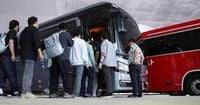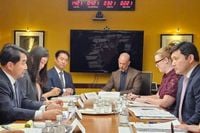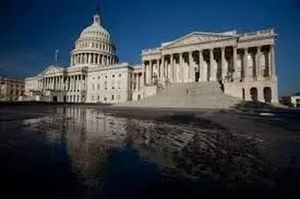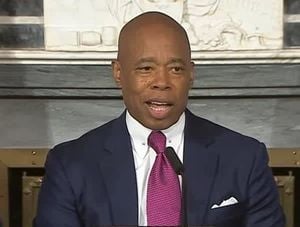On October 1, 2025, South Korea’s Foreign Ministry announced a breakthrough agreement with the United States that will allow South Korean engineers and workers to help build and service industrial sites in America using short-term business visas or the visa waiver program. The announcement comes on the heels of a dramatic immigration raid in Georgia that rattled both countries and cast a spotlight on the complex web of visa requirements underpinning the billions of dollars flowing between these two economic powerhouses.
The backstory is as dramatic as it is consequential. On September 4, 2025, U.S. immigration authorities raided a massive battery factory under construction in Ellabell, Georgia—a joint venture between Hyundai Motor Group and LG Energy Solution. The factory, a $4.3 billion project expected to generate 8,500 jobs, was a jewel in the crown of Korean investment in the U.S. Instead, it became ground zero for a diplomatic crisis. According to The Korea Economic Daily and The New York Times, 316 South Korean workers, mostly engineers from LG and its subcontractors, were detained—many shackled at the hands, ankles, and waist—sparking outrage in Seoul and a wave of anxiety in corporate boardrooms.
“The images of our workers in chains were deeply distressing,” an industry official told The Korea Economic Daily. Public anger in South Korea was palpable, fueled by a sense of betrayal from a key ally just weeks after Seoul had pledged $350 billion in U.S. investments in exchange for a reduction in tariffs from 25% to 15%—a deal confirmed by Anadolu Agency and The Straits Times.
The root of the problem was, in many ways, bureaucratic. South Korean companies had been rotating engineers in and out of the U.S. on B-1 short-term business visas or through the Electronic System for Travel Authorization (ESTA), a practice that had been quietly tolerated for years. But when U.S. immigration authorities accused the workers of operating outside the legal boundaries of those visas, the result was the largest mass detention of Korean nationals on American soil in recent memory.
After a week in a detention center, all but one of the workers were flown home on a chartered plane, as reported by The New York Times. Some were so traumatized by their experience that they expressed reluctance to return, while others said they would be willing to go back if the visa situation was resolved.
In the wake of the raid, South Korea issued a stark warning: unless the United States addressed the visa hurdles for skilled workers, Korean businesses would hesitate to invest further. This concern was echoed by Hyundai Motor and LG Energy Solution, both of which paused construction and began reviewing their internal guidelines. Samsung Electronics, which had already tightened its ESTA travel rules, indicated it would follow suit, according to The Korea Economic Daily.
The diplomatic gears began to turn quickly. On October 1, 2025, officials from both countries gathered in Washington for the inaugural meeting of the South Korea-U.S. visa working group. The U.S. side, led by Deputy Secretary of State Christopher Landau and senior officials from the State Department, reaffirmed that South Korean companies could use B-1 short-term business visas or ESTA to send workers to the U.S. for critical tasks like installing, servicing, and repairing equipment. “The U.S. reconfirmed that Korean companies can use the B-1 visa for activities associated with their investment process in the U.S., such as installing, servicing and repairing equipment purchased from overseas, and that those on an ESTA program can also engage in the same activities conducted by those with the B-1 visa,” the ministry said, as reported by The Korea Economic Daily.
To help prevent future confusion, both sides agreed to establish a dedicated Korean Investor Desk at the U.S. Embassy in Seoul, which is expected to open later this month. This desk will provide visa guidance and consultation for Korean companies investing in America. Mutual communication lines were also set up among South Korea’s diplomatic missions in the U.S., U.S. Immigration and Customs Enforcement, and U.S. Customs and Border Protection, according to The Straits Times.
Industry groups in Korea greeted the outcome with relief. LG Energy Solution thanked the Korean government for its “swift support” and pledged to resume construction and operations at its U.S. plants. Hyundai Motor said it would review the new guidance carefully and update its internal rules. “Under the latest agreement between the two governments, we will make thorough preparations and work to construct and operate our plant in the United States,” LG Energy Solution said in a statement reported by The New York Times.
But the relief is tempered by lingering concerns. While the agreement clarifies the use of B-1 and ESTA for essential engineering tasks, it falls short of the comprehensive visa reform that Korean businesses have long sought. Demands for expanded access to L-1 visas for transferees and H-1B visas for skilled professionals remain unresolved. U.S. officials at the Washington meeting cited legislative constraints, making it clear that any major changes would require Congressional action—no small feat in America’s current political climate.
“While this is welcome, the fundamental problem remains that the U.S.' immigration stance leaves business travel precarious,” an industry executive in Seoul told The Korea Economic Daily. Another official added, “There is relief that we now have clarity on B-1 and ESTA use. But unless there is more clarity on visas for Korean engineers, the fear of future disruption is not going away.”
The U.S. State Department, for its part, emphasized that Washington “welcomes and encourages Korean investment” and recognizes the “critical role of skilled personnel” in the success of foreign investment in the U.S. The message is clear: America wants the jobs and capital that Korean companies bring, but it is not yet ready to overhaul its immigration system to make the process smoother for foreign engineers.
The stakes are high on both sides. For the United States, Korean investment means new factories, thousands of jobs, and a stronger industrial base. For South Korea, the U.S. is not only a key ally but also a vital market for its technology and manufacturing giants. The events in Georgia—and the diplomatic scramble that followed—highlight just how intertwined and, at times, fragile this economic partnership can be.
As the dust settles, both governments are touting the agreement as a step forward, but the episode leaves little doubt that the underlying tensions over visas and investment are far from resolved. The Korean Investor Desk and the renewed clarity on short-term visas may keep the wheels turning for now, but the call for deeper reform is likely to grow louder with each new project and every fresh round of negotiations.
For now, Korean engineers are preparing to return to Georgia and other sites across the U.S., hopeful that this latest agreement will hold—and wary that the next visa snag could be just around the corner.






